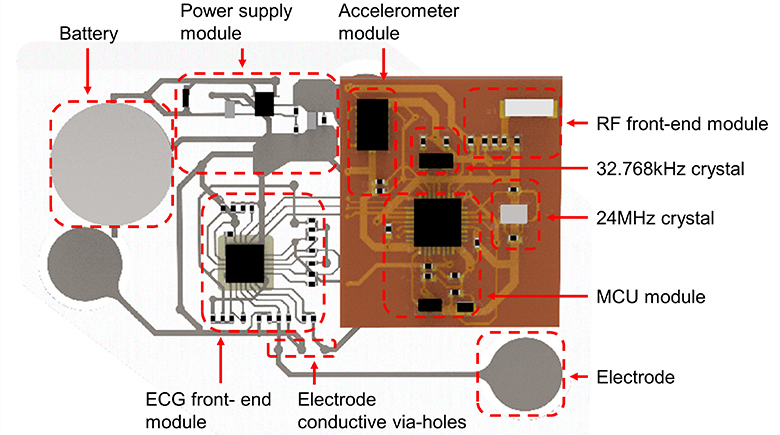
On-skin electronics are promising in human motion and vital sign monitoring, disease diagnosis and treatment. On-skin systems are soft and stretchable, and can maintain electrical performances during bending, stretching or twisting, etc. However, current integrated circuit based fabrication processes are not compatible with stretchable substrate, and recently proposed flexible hybrid integration methods typically involve complicated fabrication processes or structural design, and do not support high integration density. To tackle those challenges, this work reports flexible hybrid integration strategies which endow the on-skin electronic system with advantages of high integration density of electric components, facile fabrication schemes, high stretchability and reliability, and soft and conformal interfaces with human skin. Flexible hybrid integration schemes are proposed mainly from four aspects for the facile fabrication of the system: 1. High I/O density with highly stretchable and conductive composite materials as interconnects; 2. Multi-layer structures enabled by stretchable and conductive via-holes; 3. High reliability approach for chip attachment onto stretchable substrate; 4. Design and fabrication of strain separation structure.
Based on these methods, we develop an on-skin flexible hybrid electronic system (FHES) which integrates electrophysiology electrodes and an accelerometer. The FHES collects electrocardiogram (ECG) and acceleration data, wirelessly transmits and display the data in real time on a mobile phone application through Bluetooth communication. We also verify the accuracy and stability of the FHES through the measurements of ECG and acceleration data from human skin under various conditions. The on-skin system has great potential for applications in wearable health monitoring and physical training, while the flexible hybrid integration schemes proposed can be adopted for the development of a variety of on-skin systems for biomedical applications.





